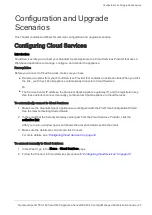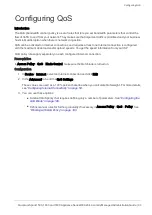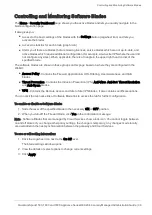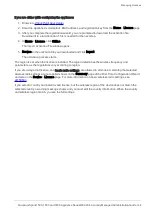
Managing Clusters
Quantum Spark 1500, 1600 and 1800 Appliance Series R80.20.40 Locally Managed Administration Guide | 30
Managing Clusters
Configuring a Cluster
Introduction
Configure a cluster to maintain connections in the organization's network when there is a failure in a cluster
member. The cluster provides redundancy.
Cluster High Availability is supported. In High Availability, only one gateway is active at a time. When there
is a failover, the standby member becomes active. There is no load sharing between the members of the
cluster.
All cluster configuration is done through the active member.
Note - Bridge and switch configurations are not supported in cluster configuration.
Configuration workflow:
1. Complete the First Time Configuration Wizard on both appliances. In the
Local Network
page of the
wizard, clear the
Enable switch on LAN ports
checkbox.
2. Configure network settings on the appliance that is the primary (active) member.
3. Connect a sync cable between the appliances.
4. Configure the active member.
5. Configure the standby member.
Prerequisites:
n
In
WebUI
>
Device
>
Local Network
, delete bridge and switch configurations before you start to
configure a cluster.
n
The appliances in a cluster must have the same hardware, firmware, and licenses.
Note - Connect the sync cable only after you complete the First Time Configuration Wizard and
remove the switch on both appliances. No additional configuration is required on both members.
Best Practice - Designate the same LAN port for the Sync interface. The default Sync interface is
LAN2/SYNC.
For the primary (active) cluster member:
1. Connect to the appliance that is the primary cluster member.
2. In the WebUI, go to
Device
>
High Availability
and click
Configure Cluster
.
3. Follow the wizard steps and configure the appliance as a primary member. For more information, see






























